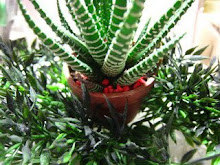Some thoughts on THAV project
It is really difficult for me to summarize my work in a few words for now.
Some part of the project is still on going and I'm still ruminating on the extensive effects of it.
I found this introduction of my initial proposal on THAV website very helpful although there are a few changes due to the practical situation after the beginning of my residency:
Having the concept and methodology referred to ecological sustainability, Chou will transform her room into an ecological art studio, which is able to carry out research regarding interaction between neighborhood inhabitants and to promote education by collaborating with schools in close proximity to thevillage. Through a long-term residence, three steps will be accomplished in succession. Soil nourishing: take good advantages of leftovers and earthworm to generate manure. Soil exchange: in cooperation with TSUEI MA MA Foundation’s office in Treasure Hill and through its community service and social intervention, Chou intends to trade soil and manure, with the propose of encouraging dwellers to plant, to take care of the landscape and to cherish natural resources. Last but least, she plans “edible landscape” attempts to unite colleges, elementary schools and community universities nearby, in hope that people who live in the “concrete jungle” get a chance of being intimate with the soil and get in touch with the natural ecological cycle that sustains plants.
I started with collaboration with Italian artist Carlotta Brunette, working on the “Edible Landscape” first and carried out my own plan of the workshop and lecture series. Then I finished the first compost installation at a spot near the artist village office, invited the staff and resident artists starting composting. When the job of the big garden down at the riverside was finally approved to be taken, Carlotta had completed her residency and left for home with a garden design behind. I took over, working and developing further the garden plan with community residents and artist village volunteers. When the basic pattern was done, I divided the garden into sections, and let community residents take over and grow vegetables on their own lots. The garden becomes a community center, with many visitors passing by and residents come to tender their plants. The effect was big. Some residents began to clean their front court and start planting again. Some even came forward to ask if they can grow more vegetables at other unused land. Through planting and growing, the community seems to come to alive again.
For myself, as an artist who has been living in the cities for most of her life, the tangible experience of touching the soil, feeling the weather and seeing the plants as well as other life forms coming out on earth has been enormous. With the laboring work spent in the garden, I put myself into the physical involvement and connected back to the Nature. It is more a substancial engagement rather than a conceptual practice that strikes me most. And it also connected the community residents to their past memory and life histories.
I added celebration to the project, holding an event collaborated with the community on the holiday before Spring Equinox, involving the children from the community and resident artists to perform. The core spirit is working together and celebrating together, creating a value and sustainable lifestyle in Threasure Hill.
(photo by Chung-Yen Chang, Heidi Yu)






















































